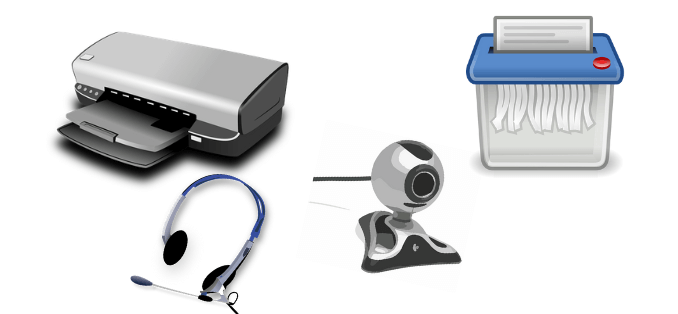The biggest factor in preparing your company or your employees to work from home is establishing a documented work from home policy. This document needs to outline the expectations and the responsibilities for both employees and the employer.
You really want to focus on setting up your employees for success. If employees are successful then the company can be successful.
Working from home is not as simple as plugging in a laptop. As you create your work from home policy you need to consider a variety of factors ranging from network security to health and safety.
But you’ll also need to tune the policy to fit your particular company culture and industry. It needs to be unique to your organization and employees to be effective.
Who will be eligible to work from home
An important consideration in your work from home policy is the scope. This includes which roles can be performed at home but also which individual employees.
Roles
For example, if your business is a single retail store then most of the roles involve engaging with customers. But you might have one person dedicated to maintaining an online presence with a website and social media. That role could likely be performed offsite.
Using that same example, perhaps one role is dedicated to handling inventory – purchasing, shipping, etc. This role might also be done from home.
You’ll need to identify each role within your organization. You might even need to list all the different types of tasks that would be associated with each role. Then you assess, for each role, whether the tasks could be performed remotely.
Make this easier by starting with any job descriptions you’ve posted in the past. The tasks you listed become your foundation list.
Individuals
Don’t forget to consider the individual personality as well. Some people may not be ready for the level of independence that comes with working at home.
So in your work from home policy, you might want to outline a particular seniority level required. And also consider a staged approach.
Outline a certain number of days per week for a designated number of weeks. Then increase that as the employee demonstrates solid, consistent performance. Until, finally, they are working completely remotely.
You could also specify eligibility based on the number of years or months or weeks worked for your company.
Case by case
There is another choice. Instead of identifying roles and individual factors, you could choose to address each application case by case.
This is fine – as long as the policy clearly indicates how it will be addressed. Personally, I find it’s easier to outline the restrictions than to rely on personal assessments.
How will the approval process be managed
The request and approval process needs to be very simple and clear. Basically, if the employee fits all the criteria documented, then approval should be automatic. And that’s why defining the criteria is so critical.
But you still need to identify who exactly provides the approval. It might be a person’s direct manager. Or, in a larger company, it could be someone in the Human Resources department.
The key element here is the documented work from home policy. But you also need to confirm that both parties understand their commitment.
So use the policy document as a contract. Perhaps you also include a survey or questionnaire confirming all the requirements are met. With all the elements outlined in that document, have both the employee and the approver sign the document. This confirms their shared responsibilities and obligations.
Equipment Requirements
Regardless of the type of company, there will almost always be specific equipment necessary to make working from home productive. So before someone can work from home, they need to attest, to confirm, they have the infrastructure required.
Network/Internet
For most companies, internet connectivity will be a critical factor. So an employee must have reliable and sufficiently speedy internet service.
You may allow the employee to confirm this orally or by signing their work from home policy agreement. Or you might require them to run a speed test from home and submit that for approval.
In some cases, the company might want to provide stipends to setup or upgrade home internet service. If the ability to work from home is crucial for your organization, then this would be a worthwhile investment.
An alternative would be similar investments in mobile hot spots. If you want your workers to be productive then you must ensure they have the right tools available.
Devices
Devices can be quite a challenge. Your first decision is whether to provide company devices or allow employees to use their own. There are pros and cons to both approaches.
Company Devices
If the company provides devices then:
- PRO – you’ll know exactly what each employee has and the specifications
- CON – you’ll need to track all that inventory, including software
- PRO – security can be standardized across the devices
- CON – it’s labour-intensive to maintain all that security effectively
- PRO – you can support your workers better as you’ll be able to build a knowledge base over time with similar issues
- CON – any device issues will always be the responsibility of the company to support and resolve
Personal Devices
If employees use personal devices then:
- PRO – this is less expensive for the company
- CON – it could present a bigger security risk as it’s not as easy to “lockdown” personal devices
- PRO – rollout would be much faster as the equipment is already available in place
- CON – if employees have older devices, they may not be as efficient or able to handle the load well
- PRO – it’s quite likely employees are already using their personal devices (regardless of whether it’s been approved), so making it official and providing more security and structure is a positive step
- CON – support may be more challenging and time-consuming with so many different devices involved
Types of devices
Physical Setup
Physical setup could be a point of debate. This should probably be evaluated in conjunction with liability. How involved should the company be with an employee’s home setup?
You’ll need to decide:
- Will the company provide any oversight for the worker’s home setup?
- Will you require a safety inspection of the worker’s proposed home office?
- Do you want your employees to submit photos of their work area or attest to checklists for health and safety?
- How will remote workers report any incidents or injuries?
- How will those incidents be investigated?
- What exactly constitutes a work-related injury at home?
- Which parts of the home will be considered part of the “workplace?”
Liability
Let me be very clear on this point – I am not providing you legal advice. I’m giving you points to consider that you should discuss with your own legal representatives.
Some points for you to discuss with your legal group:
- Should the worker’s home be considered as an extension of the office place?
- Is the company liable for injury in the worker’s home? What about loss or destruction?
- Will the company be liable for incidents in the worker’s home outside of “office” hours?
And what about clients or customers visiting a home office? You need to discuss the liability surrounding potential injuries. Whether to the clients themselves or damage to company equipment.
You should also consider having workers provide copies of their home or renters insurance.
Confidentiality
With employees working from home, you need to ensure confidential information is protected. Your work from home policy needs to pinpoint how company data is handled.
You’ll want to ensure laptops are password protected and automatic screen locking is enabled. But you also need to address printed material.
Company information should not be printed if it’s not necessary. And all company printed information must be locked when not in use.
That means a locked desk or a filing cabinet. Or in an office with a locked door.
If your employees will have customers visit their home, all material not directly related to that customer must be locked away. And if anyone on your staff meets customers in public locations (coffee shops, conference centres, airport waiting areas, etc.), they should not be carrying non-related confidential information.
And, finally, if it’s absolutely necessary to travel with confidential company information, then it must be transported in a locked case. You should also ensure it’s stored in a hotel safe when not in use.
Health and Safety
This is a very broad category. Generally, you’ll want to ensure your work from home policy references your company’s health and safety policy.
You expect employees to follow all the same guidelines when they’re working at home. Especially related to fire protection and electrical safety.
Fire Protection
Part of your work from home policy needs to address fire safety. Your employees need to confirm:
- There is a smoke alarm within a minimum of 20 feet from the home office (check your local jurisdiction recommendations)
- They have a fire extinguisher on the same floor as their home office
- Employees have identified emergency exits
- Local building and fire codes have been met for the home office space
You should also consider whether you want to mention a carbon monoxide detector.
Electrical Safety
A home office requires more electricity than usual. So you want to ensure you address that in your policy.
- Confirm that cords and cables are managed so that they don’t present a tripping hazard
- All outlets must be grounded and should not be overloaded
- You’ll want to consider surge protection for all work-related equipment
- If extension cords are required, ensure they’re in good condition
- Maintain proper equipment ventilation
Emergency Procedures
In an office setting, you would have documented emergency procedures. And you would have drills to practice and confirm they work. How do you address this in a home office?
- Your workers should confirm they have an evacuation plan
- They also need to demonstrate they have basic first aid supplies available
- You’ll want to ensure emergency contact information is current
Security Standards
Security needs to be at the forefront of your mind. Especially for your work from home policy.
You really can’t afford a breach of security. That could affect you financially. But you could also suffer serious reputational damage.
Access to your network
Your network is the foundation of your security. Blocking unauthorized access to your network is the best defence in protecting your company.
So, how do you protect your network?
VPN
My preferred option is using a VPN. VPN is Virtual Private Network. It provides you a sort of tunnel through which your company’s network can be accessed.
There are many VPN service providers available. But do your homework as some are better than others. You’ll want strong encryption and outstanding speed.
But you’ll also want an option that’s easy to use. After all, you need your employees to use it for it to be effective.
Finally, you want stellar technical support. This is especially important if you are relying on the service provider, instead of providing support through your company resources.
And, of course, you’ll need to enforce its use. Anytime an employee needs to access your company network, they MUST go through the VPN. Include this in your work from home policy. And, you’ll also need to ensure it works on all necessary devices reliably.
Citrix
Another option for remote access is through Citrix virtual applications. Citrix provides server-based desktops through any device.
You’ll have access to applications plus desktops. But the technical aspects are handled by Citrix itself. That’s product installation, any setup or configuration, upgrades and also monitoring.
Your company controls which applications and the user access. But you don’t need to dedicate resources to support the technical infrastructure. That’s serious money savings and also time savings.
TeamViewer
TeamViewer is most well-known for allowing you to remotely access and control another computer. However, it has advanced a long way in the last few years.
TeamViewer provides a remote connectivity platform. And with that, you also get file sharing, device management, user and device access reporting, and more.
It’s not as advanced as the Citrix or VPN options. But it might be sufficient for smaller organizations.
Access restrictions
Regardless of the method of access to your network, you also want to include some access guidelines.
- Choose cloud applications if possible as you’ll avoid download and installation support issues
- You’ll still want a firewall in place and some form of encryption
- Every device accessing the network must still have anti-virus software installed
- Users must enable automatic screen locking and logoff when they are away from their devices
- Your employees must NEVER access the company’s network via public wi-fi
And one final consideration – you might want to restrict employees from using USB drives. These are often easily corrupted so it’s good practice to avoid their use for company activity.
Dress Code
You probably weren’t thinking about a dress code when you began considering staff working from home. However, you do want to set the bar with some sort of standard.
There are a few reasons for this. First of all, you may need to have impromptu video calls with customers. And you need your staff to be presentable when that happens. 🤨
But you also need to consider productivity. There have been many studies that confirm “dressing for work” helps your brain. It gives you a sense of structure and improves productivity and mental alertness.
That does NOT mean you need to dress the same way you would for the office. I suggest you establish a casual dress code. Similar to what you might outline for Friday attire.
You want clean, presentable employees focused on their work. Always ready to jump on a video call when necessary without embarrassment – to themselves or the company.
Expenses and Reimbursement
Having some (or maybe more) of your employees work from home can save money. The company could benefit from reduced costs for internet access, phone services, electricity and utilities. Whereas employees benefit primarily in reduced commuting costs.
You can pass some of that savings on to your employees by reimbursing some of their expenses at home. This will help ensure they have a home office setup that encourages a focus on security and productivity.
Your work from home policy should explicitly identify what expenses are eligible for reimbursement. Consider:
- Internet service – providing a stipend or subsidy, especially if it’s necessary to upgrade the existing network speed
- Phone service – upgrading current smartphone, upgrading data plan, installation of a landline, etc.
- Laptop – upgrading to more current equipment (better speed and better security)
- Software – anti-virus, firewall, VPN, etc.
- Peripherals – printer, shredder, webcam, headset, scanner, etc.
Availability
An area that is often overlooked is clarification of office hours. When you work in the office, there’s an implicit understanding. During the primary office hours, you’re physically in the office.
But it’s also easier to physically see who is in the office. And if you’re not at your desk, then you’re likely in a meeting or taking a coffee or lunch break.
It’s much more challenging when you’re working from home as your co-workers can’t see you. They can’t easily determine when you’ve started your day. Nor when you’ve stepped away for a break.
So you need to ensure your work from home policy confirms not only the number of hours expected each day. But also, the range of start and end times for each day.
Establishing these boundaries is critical to ensure the policy is effective. And not just for your employees. Your company cannot be successful if your staff are not productive over time. And they won’t be effective if they suffer burnout.
Communication channels
Another way to avoid burnout or frustration with your staff working from home is communication. Maintaining clear communication channels will ensure the co-workers and teams remain engaged.
Step 1
Firstly, you’ll want to ensure you have the necessary software available for the different types of communication you need. And then you need to help your employees understand how to use the software and when.
Read this article for more about strategies and tools for working from home.
A checklist will be very handy here. A list of the software and when to choose which method. This will make everyone more efficient.
Checklist example
1. Text/Messaging
- Quick questions expecting short answers
- You can continue working while awaiting a response
2. Phone
- You need an immediate response
- You must interrupt your work to get the information you need
3. Email
- Communication across multiple teams at once
- Medium sized communication – not terribly long but not short either
- You don’t necessarily need an immediate response
4. Video Chat
- When you need to engage multiple people for input or to reach a collaborative agreement
- When you really need to see body language or facial expressions
5. Video Recording
- A tutorial or how-to explanation is required
- The information will need to be repeated multiple times
- Communication needs to be exchanged across different time zones
- Long communications which might need to be referenced multiple times (or rewound and replayed)
Step 2
Secondly, you’ll want to set up regular checkpoints. This might be daily team “stand-ups” or “scrums” to touch base and address urgent issues. But it could also be quick checkpoints with individuals. Just confirming their tasks are on track but also ensuring they feel supported.
Step 3
Thirdly, you need to define response times. Since co-workers cannot see each other, you need to level-set expectations.
For example, when employee A sends a message to employee B, should they expect an immediate response? This is extremely challenging to document but also critical to success.
The way to address this is by modifying how the communication occurs. Using the previous example, if employee A needs a response within a certain timeframe then you need to outline a few things:
- Which communication channels should be used for the different response time periods (use the checklist you’ll create in Step 1)
- How the workers should identify their response needs – use a combination of tags in their communications to quickly identify urgency. Examples:
- URGENT – if you need a close to immediate response then prefix your communication with this tag
- CRITICAL – if it’s not immediately urgent but you need clarification within, say, four (4) hours
- EOD – you need a response by the end of the day
- Day of the week – identify a specific day of the week by which you need a response
Finally, you’ll need to decide how and/or when personal phone numbers will be distributed throughout teams. Whether these are landline numbers or personal mobile phones.
Technical Support
When you have a remote workforce, technical support will become paramount. You MUST set up your employees for success or your company won’t be successful.
You want to foster independence among your staff. And that means giving them multiple means by which they can get support.
FAQ
Ensure you have a repository of FAQ – Frequently Asked Questions. Ideally, this would be available on the company intranet, an internal website.
A preemptive list can be outlined in advance but it needs to grow as issues are encountered. So you’ll want to ensure there’s a way for workers to contribute to the FAQ dynamically.
Documentation/tutorials
In addition to the FAQ, you’ll want some more detailed documentation. This could be in the form of quick start guides or tutorials or reference documents.
You might also want to consider screen-recorded videos. These are great to outline actions step-by-step.
Support flowchart
A support flowchart identifies who to contact and in what circumstances. You’ll want to reference this flowchart in your work from home policy.
If the FAQ doesn’t provide the answers, then employees should consult the flowchart. And this will guide them to additional documentation (and tutorials) or to technical support contact.
Support contact
Depending on the size of your company you have different options available. At a minimum, you’ll want to provide email support.
You might also consider phone support or chat support. The main goal is that your staff understands how they can get support when they have a technical issue.
Training
Keep in mind, the very first time workers need to access the company network remotely will take longer. They’ll be uncomfortable with the process. But education in advance can really improve this learning curve.
Plus, first access often requires synchronization of files and data. And that is often quite time-consuming. So ensure that’s clearly identified with some great tutorials or video walkthroughs.
Final thoughts
You want your company to be successful while offering work from home options to your employees. And that can be achieved by documenting a thoughtful work from home policy.
Review the various roles and tasks to identify which are amenable to remote work. Clearly outline the request and approval process. Highlight the minimum equipment requirements specific to the roles: connectivity, devices, etc. Ensure you consider the physical setup in the home and company liability.
Ensure you address the health and safety issues necessary. And safeguard the company (and your employees) with strong security standards. Outline exactly how you’ll approach expenses and potential reimbursement.
Finally, clarify communications. And then re-clarify. And then discuss it again!
Like This Post? Put a Pin On It!
Did you find this article useful and helpful?
Share this WOWIT post on social media!
Have some suggestions of your own?
Click the Submit Comment button below to let us know!
Want More?
Would you like to learn more about this topic? Or perhaps explore some other topics? Choose from one of the categories below to see more:
Subscribe to our newsletter to have information delivered right to your inbox.























